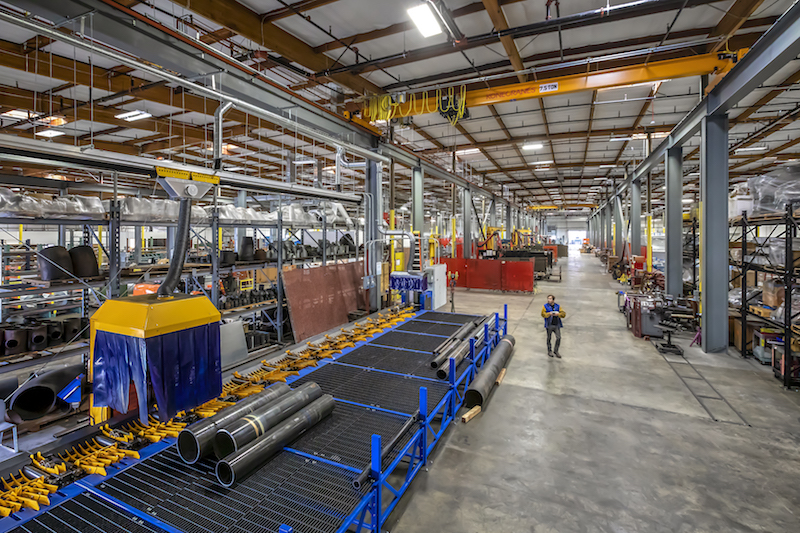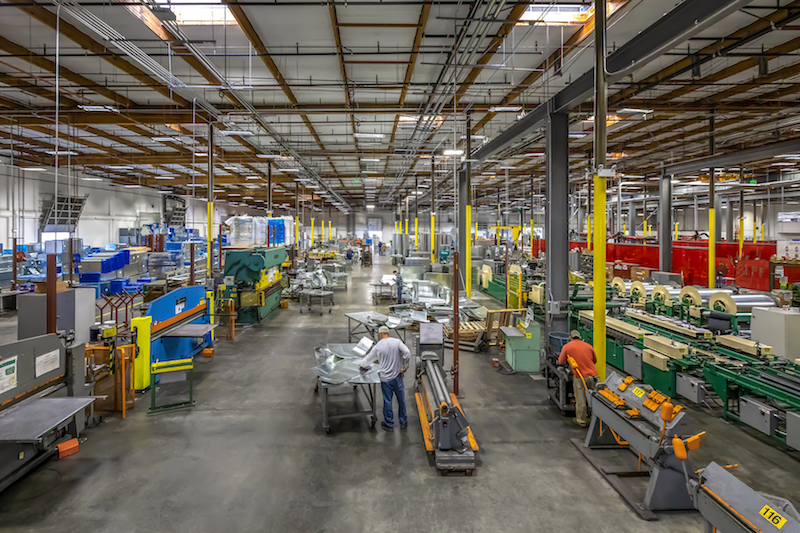It’s no secret that, despite improvements in its employment rate that rose steeply last month, the construction industry still struggles with labor shortages. In fact, 40% of construction companies turn down new projects because they don’t have enough skilled labor, according to the latest USG-Chamber of Commerce Commercial Construction Index, produced with Dodge Data & Analysts and based on responses from a Contractor Panel of more than 2,700 industry decision makers.
Most builders have already revved up their recruitment and training machines to attract and retain workers. Others are leaning into technology to find work-saving solution. Southland Industries, one of the industry’s largest MEP building systems firms, is also focusing on process refinement, training, and technology integration that bring into play, among other things, offsite construction and fabrication, data centralization and virtualization, the intersection of design engineering and detailing, and BIM to improve information delivery.
Judd Fuoto, Southland’s lead solutions analyst, tells BD+C that his large company, with its many priorities, is trying to achieve a balance that aligns its business and technology agendas. Southland is also trying to avoid the trap too many other companies fall for when they dive into new things without defining success or gauging risk.
“There’s a lot of software solutions out there looking for problems,” he says. “And that software often addresses specific things but doesn’t play nice with each other.”
Southland’s methodology is to document its workflow and to let the results prompt process improvements. It has also overhauled its technology governance so that “we’re staying aligned with what’s important and what’s effective.”

Southland's new office space and fabrication facility in Southern California, built by H. Hendy Associates, is laid out to create synergy among processes and worker teams. Hendy even measured the number of steps it would take employees to get to key areas, and designed pathways through the floor plan to support the quickest navigation patterns. The facility also includes a new R&D center. Image: Southland Industries
Fuoto concedes that some measurements so far have been anecdotal, and some are trackable “if we hit intended targets.” But there have been noteworthy gains. By automating its plants’ commissioning Southland has improved worker capacity by an average of 45 minutes per person per day, according to a recent poll with responses from 115 workers in the field.
At the very least, says Fuoto, it’s important for companies in this industry to determine what problems they are trying to solve, and then find the tools needed, instead of “chasing after every shiny gadget” first and then trying to apply them to their company’s operations.
“Will the tool augment or disrupt your process” is what all companies, including Southland, need to keep asking themselves before they make costly investments in software, equipment, or even factories.
Related Stories
| Oct 12, 2010
Guardian Building, Detroit, Mich.
27th Annual Reconstruction Awards—Special Recognition. The relocation and consolidation of hundreds of employees from seven departments of Wayne County, Mich., into the historic Guardian Building in downtown Detroit is a refreshing tale of smart government planning and clever financial management that will benefit taxpayers in the economically distressed region for years to come.
| Oct 12, 2010
Gartner Auditorium, Cleveland Museum of Art
27th Annual Reconstruction Awards—Silver Award. Gartner Auditorium was originally designed by Marcel Breuer and completed, in 1971, as part of his Education Wing at the Cleveland Museum of Art. Despite that lofty provenance, the Gartner was never a perfect music venue.
| Oct 12, 2010
Cell and Genome Sciences Building, Farmington, Conn.
27th Annual Reconstruction Awards—Silver Award. Administrators at the University of Connecticut Health Center in Farmington didn’t think much of the 1970s building they planned to turn into the school’s Cell and Genome Sciences Building. It’s not that the former toxicology research facility was in such terrible shape, but the 117,800-sf structure had almost no windows and its interior was dark and chopped up.
| Oct 12, 2010
Full Steam Ahead for Sustainable Power Plant
An innovative restoration turns a historic but inoperable coal-burning steam plant into a modern, energy-efficient marvel at Duke University.
| Sep 30, 2010
Luxury hotels lead industry in green accommodations
Results from the American Hotel & Lodging Association’s 2010 Lodging Survey showed that luxury and upper-upscale hotels are most likely to feature green amenities and earn green certifications. Results were tallied from 8,800 respondents, for a very respectable 18% response rate. Questions focused on 14 green-related categories, including allergy-free rooms, water-saving programs, energy management systems, recycling programs, green certification, and green renovation.
| Sep 21, 2010
New BOMA-Kingsley Report Shows Compression in Utilities and Total Operating Expenses
A new report from the Building Owners and Managers Association (BOMA) International and Kingsley Associates shows that property professionals are trimming building operating expenses to stay competitive in today’s challenging marketplace. The report, which analyzes data from BOMA International’s 2010 Experience Exchange Report® (EER), revealed a $0.09 (1.1 percent) decrease in total operating expenses for U.S. private-sector buildings during 2009.
| Sep 16, 2010
Green recreation/wellness center targets physical, environmental health
The 151,000-sf recreation and wellness center at California State University’s Sacramento campus, called the WELL (for “wellness, education, leisure, lifestyle”), has a fitness center, café, indoor track, gymnasium, racquetball courts, educational and counseling space, the largest rock climbing wall in the CSU system.
| Sep 13, 2010
World's busiest land port also to be its greenest
A larger, more efficient, and supergreen border crossing facility is planned for the San Ysidro (Calif.) Port of Entry to better handle the more than 100,000 people who cross the U.S.-Mexico border there each day.
| Sep 13, 2010
Triple-LEED for Engineering Firm's HQ
With more than 250 LEED projects in the works, Enermodal Engineering is Canada's most prolific green building consulting firm. In 2007, with the firm outgrowing its home office in Kitchener, Ont., the decision was made go all out with a new green building. The goal: triple Platinum for New Construction, Commercial Interiors, and Existing Buildings: O&M.














